An Australian farm forester
Philip Ashley, New Zealand Tree Grower May 2015.
John Woodley is as much at home talking about trees as he is motor cycle racing and fighter planes. The one thing you can count on is that a conversation over a freshly brewed coffee holds few dull moments. An energetic 64-year-old John reckons he has another 20 years before hanging up his helmet and chainsaw. He is about halfway through developing what has to be one of the most interesting privately owned agroforestry farm and arboretum in Australia.
There are state owned arboretums in Australia and these include the RJ Hamer Arboretum in Victoria, the Tasmanian Arboretum on the Don river near Devonport and the Lindsay Pryor National Arboretum in Canberra. A national arboretum is being developed, also in Canberra and created after the 2003 bushfires there.
Agroforestry or trees on farms aims to exploit the benefits of combining trees and shrubs with crops. It creates a more productive, healthy, profitable and sustainable use of farm land. Many plants under trees still grow well even though they get less sunlight. An example of this is coffee which benefits from the lack of weeds under tree canopies, and actually tastes better.
Australian farmers planting more trees
Windbreaks are important to keep farm animals warmer or cooler. Cold sheep eat 1.6 times more food each day to sustain themselves than warm sheep. Hot cows may produce 15 per cent less milk than cool ones. In addition, carbon sequestration, noise and dust reduction and the benefits of improved soil and water quality are all reasons why farmers in Australia are planting more trees than before.
This is where John steps in. His demonstration tree farm near Taggerty in Victoria is an example of how to be involved in farm forestry. John’s farm is open for inspection by appointment and he shares his 30 years of expertise with silviculture clients across Victoria. He is able to show where the soil is right or wrong for a particular species. He can tell you about pruning regimes, undergrowth, tree-spacing, animal damage, weather conditions, soil type, drainage fungi and pests. His knowledge and experience has led to a recent establishment and management of 10,000 trees on a 270 hectare property at Eildon, among many other projects.
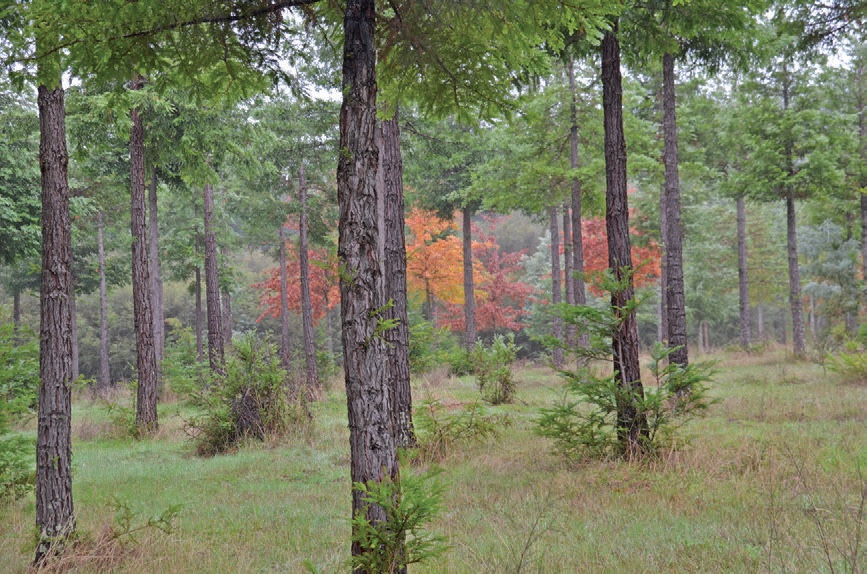

Three part life
John’s working life can be broken into three parts, the final unfinished. He started out as an engine fitter in the Royal New Zealand Air Force, working on the Tiger Moth,Vampire, Canberra bomber and Douglas DC3 aircraft. Although not a pilot, John maintains his interest in aviation.
John’s second career was that of motorcycling road race champion. Gentleman John, as he was known, won the Australian 500 cc Grand Prix at Bathurst three times in 1976, 1977 and 1979 and five New Zealand championships from 1974 to 1980. He competed in Europe, Malaysia and Indonesia and finished ninth in the Senior 500cc TT class in the Isle of Man. John returned to racing in 2010 finishing fourth in the Bears non- Japanese machines class in the New Zealand Tri-Series.
After motor racing he joined a New Zealand silviculture crew. A small business followed and for five years he built houses and flats. John arrived permanently in Australia in 1987 and in 1994 bought the near-barren 40 hectare property at Taggerty. At the time there were three trees on the site and they are still standing.
Plantation park
The initial planting was for profit and included radiata pine and shining gum Eucalyptus nitens for sawlogs, with macrocarpa for building and cabinet making. This was to be John’s superannuation fund. At the time of planting one tree was worth $350 and this worked out to ten hectares being valued at a million dollars. Today’s value is not as high, but diminishing timber resources should see prices rise again.
Over the years, John’s focus has moved from purely commercial to one of philanthropy. There are now over 50 established species on site totalling six thousand trees. While the property is essentially a plantation, it has a park-like quality which provides a habitat for other plants and animals. It is John’s wish that the property be an example of farm forestry for the benefit of the farming community, as well as a place suitable for public use.
The nearby Toolangi Forest Discovery Centre was closed in 2010 because of building compliance for bushfire prone areas. A visitor centre is planned for the Taggerty Arboretum to provide educational programmes for colleges and schools.
Among John’s species are Californian redwood, Himalayan cedar, red ironbark, robinia, Japanese cedar, western red cedar and a wide range of local hardwood species suitable for high-value furniture making. Of interest to farmers will be planting and studying hybrid species that include the Ovens cypress which is gaining a reputation as a plantation species to replace the canker prone macrocarpa.
On the day I visited, John was preparing to plant oak trees inoculated with truffle fungus. At $1,500 a kilogram for truffles it seems a worthwhile venture.
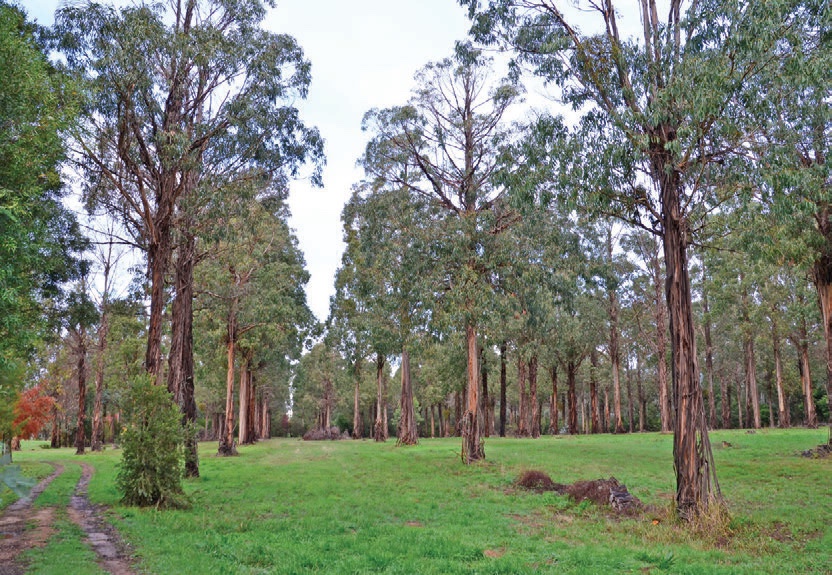
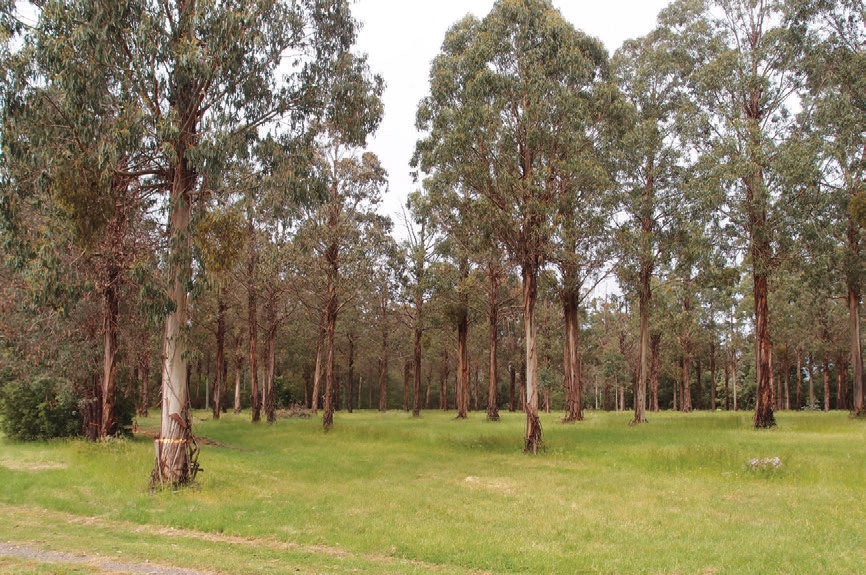
Excellent investment
Farm forestry has become unpopular since the collapse of the Victorian Treecorp group. Investors received very little return from their investments. However, trees on farms are an excellent investment for returns other than wood. Australia imports over two billion dollars worth of timber, pulp and paper products every year and this is not sustainable. With the closing up of native forests Australia-wide, private plantations offer sawmills a sound alternative.
The Taggerty property, in the shade of the Cathedral mountain range is a special place for John. He talks about something he calls emotional superannuation or the investment in life. The creation of a state of mind where your sense of well-being improves because of how you live. He describes this realisation of change and acknowledgement of landscape change, usually for the better, as emotional superannuation. His manna gums for example were planted to attract koalas to the property and an extensive range of shrubs and understorey plants encourage biodiversity.
John Woodley has experienced excitement and peace in his life so far. There’s nothing like racing flat-out down Bathurst’s Conrod Straight on your Suzuki RG500 with just a helmet and leathers between you and the road. With the last 30 years in farm forestry, John now gets excited by more peaceful things such as foliage, soil, bark and fungi. At 64 most people would be thinking about retirement but like nearly all people who work with wood and trees John is only just getting started.
A longer version of this article was previously published in Australian Wood Review.
First harvest at Taggerty farm
The first commercial harvest of plantation grown shining gum has now taken place. Many of the 18-year-old pruned logs yielded B grade logs which will produce flooring and finishing timber of quality, very similar to Victorian ash and Tasmanian oak. The results of this first harvest demonstrate that native sawlogs of high quality can be grown in plantations on farmland.
John Woodley intends to replant but will use different eucalypt species which have already proved to be better performing on the low lying clay soils at Taggerty. Trial planting of different species on adjacent land has shown good performance and better drought tolerance than shining gum. The shining gum is not drought tolerant and is also susceptible to root rot on the clay soils with poor drainage.

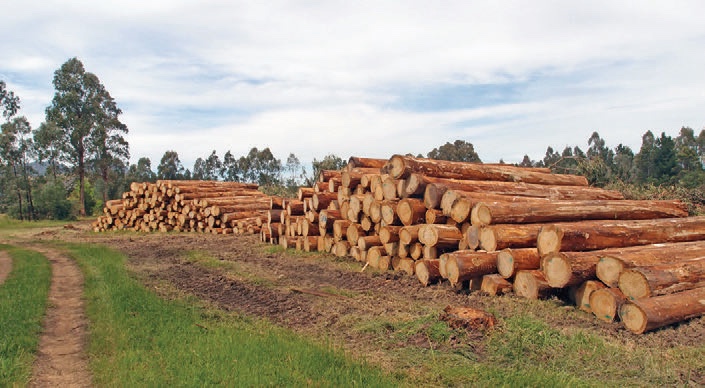

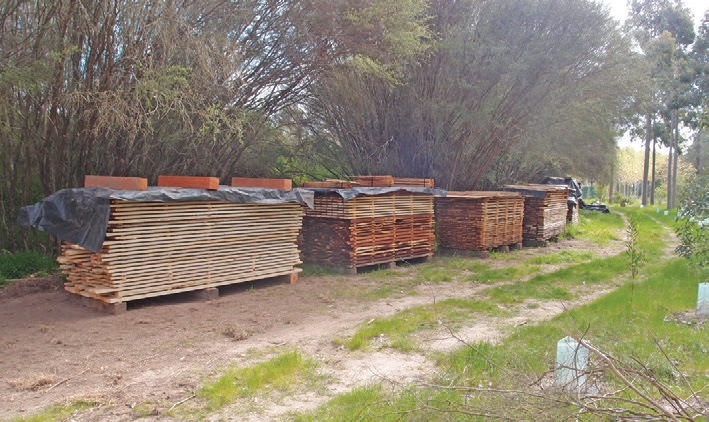
Quality timber
Contrary to popular belief among traditional sawmillers and foresters, fast grown eucalypt sawlogs are not of lower quality because of their fast growth. In fact the timber maintains its hardness and mills more consistently than the logs from native forests because of the management to keep competition between trees to a minimum. Competition can cause stresses in the logs which reduce the recovery rate of high quality boards when milling, especially on smaller diameter sawlogs.
John has considerable experience with growing and milling eucalypt trees for timber. He says that providing the species is matched to the site in terms of soil type and rainfall, large diameter sawlogs can be produced in relatively short rotations of 20 years and up to 30 years for the slower growing and drought tolerant species.
John originally bought the property in 1994 because of its rainfall figure of 900 mm which he says provides adequate rainfall for a broad range of native species, as well as pine is a valuable and useful timber for building construction. He sees the pine being useful for framing because of its ease of handling and nailing, and the native species being useful for finishing timber and durability and attractiveness for flooring.
Visitors welcome
Among his favourite species for this area are spotted gum Corymbia maculata, southern blue gum Eucalyptus bicostata and Sydney blue gum E.saligna. Spotted gum, while frost sensitive, can be grown very well when planted on a sloping site which provides air drainage at night time and much reduced incidence of frost.
John is planning more workshops to give local landowners an insight into how they can grow native trees and exotics as multi use woodlots for timber, shade, shelter and amenity. The environment can always be enhanced by the correct use of trees even in a farming landscape where grazing animals is the primary income earning objective. John welcomes visitors and is more than happy to talk about his mistakes as well as his successes in growing sawlogs for high quality timber. There is also much to see and learn about biodiversity, in both plants and native animals.

 Farm Forestry New Zealand
Farm Forestry New Zealand